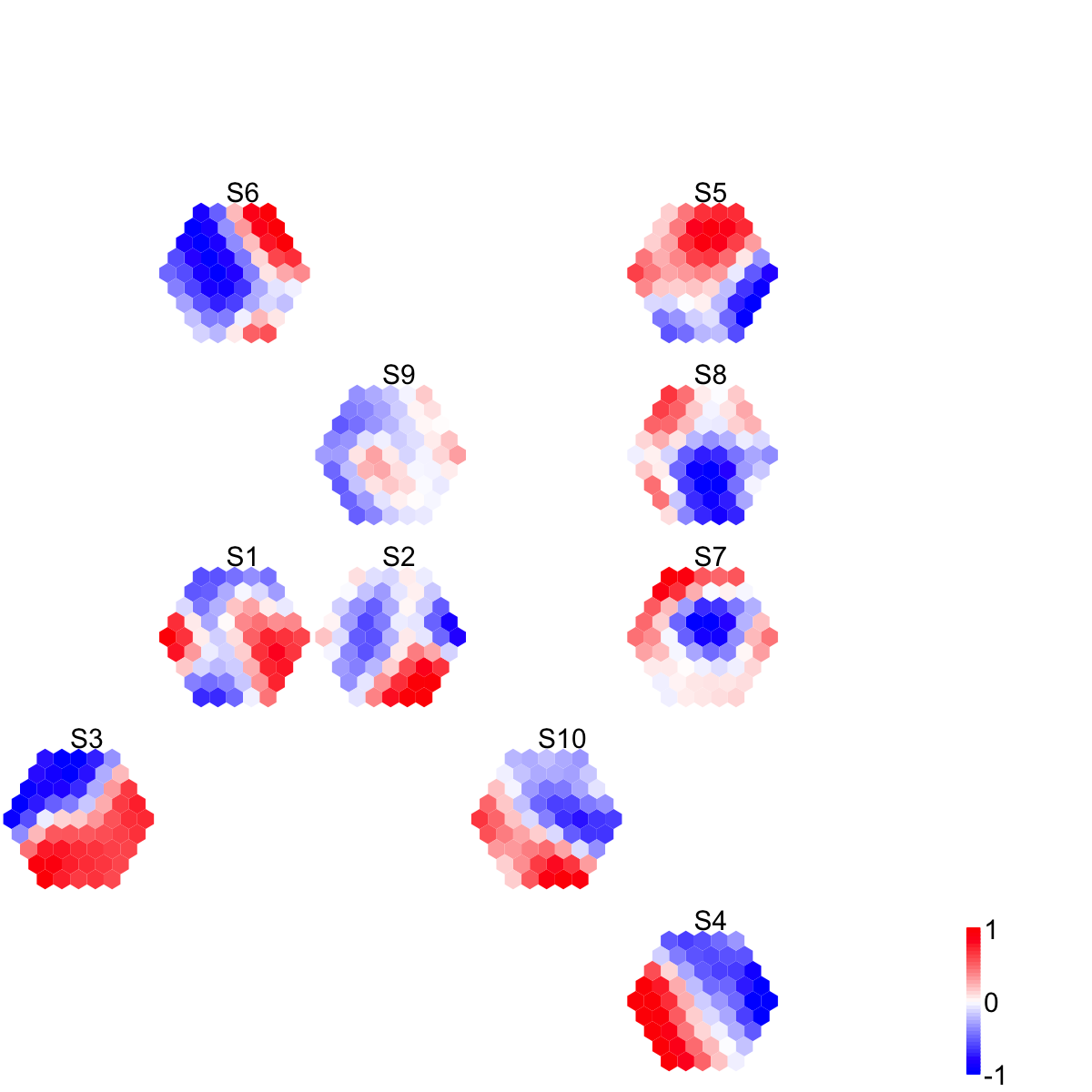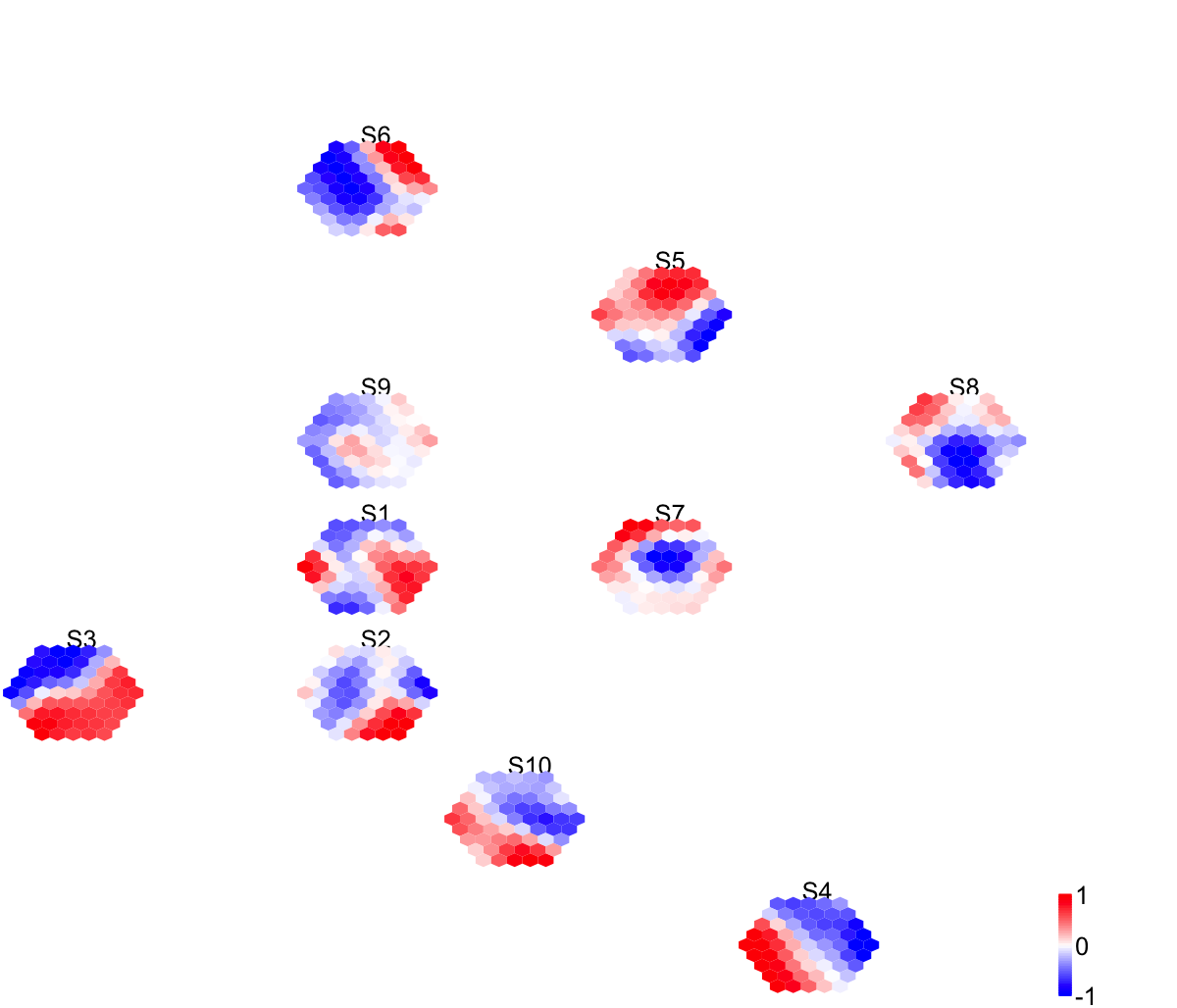Start at 2017-03-27 18:59:33
First, define topology of a map grid (2017-03-27 18:59:33)...
Second, initialise the codebook matrix (61 X 10) using 'linear' initialisation, given a topology and input data (2017-03-27 18:59:33)...
Third, get training at the rough stage (2017-03-27 18:59:33)...
1 out of 7 (2017-03-27 18:59:33)
updated (2017-03-27 18:59:33)
2 out of 7 (2017-03-27 18:59:33)
updated (2017-03-27 18:59:33)
3 out of 7 (2017-03-27 18:59:33)
updated (2017-03-27 18:59:33)
4 out of 7 (2017-03-27 18:59:33)
updated (2017-03-27 18:59:33)
5 out of 7 (2017-03-27 18:59:33)
updated (2017-03-27 18:59:33)
6 out of 7 (2017-03-27 18:59:33)
updated (2017-03-27 18:59:33)
7 out of 7 (2017-03-27 18:59:33)
updated (2017-03-27 18:59:33)
Fourth, get training at the finetune stage (2017-03-27 18:59:33)...
1 out of 25 (2017-03-27 18:59:33)
updated (2017-03-27 18:59:33)
2 out of 25 (2017-03-27 18:59:33)
updated (2017-03-27 18:59:33)
3 out of 25 (2017-03-27 18:59:33)
updated (2017-03-27 18:59:33)
4 out of 25 (2017-03-27 18:59:33)
updated (2017-03-27 18:59:33)
5 out of 25 (2017-03-27 18:59:33)
updated (2017-03-27 18:59:33)
6 out of 25 (2017-03-27 18:59:33)
updated (2017-03-27 18:59:33)
7 out of 25 (2017-03-27 18:59:33)
updated (2017-03-27 18:59:33)
8 out of 25 (2017-03-27 18:59:33)
updated (2017-03-27 18:59:33)
9 out of 25 (2017-03-27 18:59:33)
updated (2017-03-27 18:59:33)
10 out of 25 (2017-03-27 18:59:33)
updated (2017-03-27 18:59:33)
11 out of 25 (2017-03-27 18:59:33)
updated (2017-03-27 18:59:33)
12 out of 25 (2017-03-27 18:59:33)
updated (2017-03-27 18:59:33)
13 out of 25 (2017-03-27 18:59:33)
updated (2017-03-27 18:59:33)
14 out of 25 (2017-03-27 18:59:33)
updated (2017-03-27 18:59:33)
15 out of 25 (2017-03-27 18:59:33)
updated (2017-03-27 18:59:33)
16 out of 25 (2017-03-27 18:59:33)
updated (2017-03-27 18:59:33)
17 out of 25 (2017-03-27 18:59:33)
updated (2017-03-27 18:59:33)
18 out of 25 (2017-03-27 18:59:33)
updated (2017-03-27 18:59:33)
19 out of 25 (2017-03-27 18:59:33)
updated (2017-03-27 18:59:33)
20 out of 25 (2017-03-27 18:59:33)
updated (2017-03-27 18:59:33)
21 out of 25 (2017-03-27 18:59:33)
updated (2017-03-27 18:59:33)
22 out of 25 (2017-03-27 18:59:33)
updated (2017-03-27 18:59:33)
23 out of 25 (2017-03-27 18:59:33)
updated (2017-03-27 18:59:33)
24 out of 25 (2017-03-27 18:59:33)
updated (2017-03-27 18:59:33)
25 out of 25 (2017-03-27 18:59:33)
updated (2017-03-27 18:59:33)
Next, identify the best-matching hexagon/rectangle for the input data (2017-03-27 18:59:33)...
Finally, append the response data (hits and mqe) into the sMap object (2017-03-27 18:59:33)...
Below are the summaries of the training results:
dimension of input data: 100x10
xy-dimension of map grid: xdim=9, ydim=9, r=5
grid lattice: hexa
grid shape: suprahex
dimension of grid coord: 61x2
initialisation method: linear
dimension of codebook matrix: 61x10
mean quantization error: 4.9630432442287
Below are the details of trainology:
training algorithm: batch
alpha type: invert
training neighborhood kernel: gaussian
trainlength (x input data length): 7 at rough stage; 25 at finetune stage
radius (at rough stage): from 3 to 1
radius (at finetune stage): from 1 to 1
End at 2017-03-27 18:59:33
Runtime in total is: 0 secs
Start at 2017-03-27 18:59:33
First, define topology of a map grid (2017-03-27 18:59:33)...
Second, initialise the codebook matrix (30 X 61) using 'linear' initialisation, given a topology and input data (2017-03-27 18:59:33)...
Third, get training at the rough stage (2017-03-27 18:59:33)...
1 out of 300 (2017-03-27 18:59:33)
30 out of 300 (2017-03-27 18:59:33)
60 out of 300 (2017-03-27 18:59:33)
90 out of 300 (2017-03-27 18:59:33)
120 out of 300 (2017-03-27 18:59:33)
150 out of 300 (2017-03-27 18:59:33)
180 out of 300 (2017-03-27 18:59:33)
210 out of 300 (2017-03-27 18:59:33)
240 out of 300 (2017-03-27 18:59:33)
270 out of 300 (2017-03-27 18:59:33)
300 out of 300 (2017-03-27 18:59:33)
Fourth, get training at the finetune stage (2017-03-27 18:59:33)...
1 out of 1200 (2017-03-27 18:59:33)
120 out of 1200 (2017-03-27 18:59:33)
240 out of 1200 (2017-03-27 18:59:33)
360 out of 1200 (2017-03-27 18:59:33)
480 out of 1200 (2017-03-27 18:59:33)
600 out of 1200 (2017-03-27 18:59:33)
720 out of 1200 (2017-03-27 18:59:33)
840 out of 1200 (2017-03-27 18:59:33)
960 out of 1200 (2017-03-27 18:59:33)
1080 out of 1200 (2017-03-27 18:59:33)
1200 out of 1200 (2017-03-27 18:59:33)
Next, identify the best-matching hexagon/rectangle for the input data (2017-03-27 18:59:33)...
Finally, append the response data (hits and mqe) into the sMap object (2017-03-27 18:59:33)...
Below are the summaries of the training results:
dimension of input data: 10x61
xy-dimension of map grid: xdim=6, ydim=5, r=3
grid lattice: rect
grid shape: sheet
dimension of grid coord: 30x2
initialisation method: linear
dimension of codebook matrix: 30x61
mean quantization error: 4.58202954421453
Below are the details of trainology:
training algorithm: sequential
alpha type: invert
training neighborhood kernel: gaussian
trainlength (x input data length): 30 at rough stage; 120 at finetune stage
radius (at rough stage): from 1 to 1
radius (at finetune stage): from 1 to 1
End at 2017-03-27 18:59:33
Runtime in total is: 0 secs
Start at 2017-03-27 18:59:34
First, define topology of a map grid (2017-03-27 18:59:34)...
Second, initialise the codebook matrix (49 X 61) using 'linear' initialisation, given a topology and input data (2017-03-27 18:59:34)...
Third, get training at the rough stage (2017-03-27 18:59:34)...
1 out of 490 (2017-03-27 18:59:34)
49 out of 490 (2017-03-27 18:59:34)
98 out of 490 (2017-03-27 18:59:34)
147 out of 490 (2017-03-27 18:59:34)
196 out of 490 (2017-03-27 18:59:34)
245 out of 490 (2017-03-27 18:59:34)
294 out of 490 (2017-03-27 18:59:34)
343 out of 490 (2017-03-27 18:59:34)
392 out of 490 (2017-03-27 18:59:34)
441 out of 490 (2017-03-27 18:59:34)
490 out of 490 (2017-03-27 18:59:34)
Fourth, get training at the finetune stage (2017-03-27 18:59:34)...
1 out of 1960 (2017-03-27 18:59:34)
196 out of 1960 (2017-03-27 18:59:34)
392 out of 1960 (2017-03-27 18:59:34)
588 out of 1960 (2017-03-27 18:59:34)
784 out of 1960 (2017-03-27 18:59:34)
980 out of 1960 (2017-03-27 18:59:34)
1176 out of 1960 (2017-03-27 18:59:34)
1372 out of 1960 (2017-03-27 18:59:34)
1568 out of 1960 (2017-03-27 18:59:34)
1764 out of 1960 (2017-03-27 18:59:35)
1960 out of 1960 (2017-03-27 18:59:35)
Next, identify the best-matching hexagon/rectangle for the input data (2017-03-27 18:59:35)...
Finally, append the response data (hits and mqe) into the sMap object (2017-03-27 18:59:35)...
Below are the summaries of the training results:
dimension of input data: 10x61
xy-dimension of map grid: xdim=7, ydim=7, r=4
grid lattice: rect
grid shape: sheet
dimension of grid coord: 49x2
initialisation method: linear
dimension of codebook matrix: 49x61
mean quantization error: 3.08127685132509
Below are the details of trainology:
training algorithm: sequential
alpha type: invert
training neighborhood kernel: gaussian
trainlength (x input data length): 49 at rough stage; 196 at finetune stage
radius (at rough stage): from 1 to 1
radius (at finetune stage): from 1 to 1
End at 2017-03-27 18:59:35
Runtime in total is: 1 secs


 visCompReorder(sMap=sMap, sReorder=sReorder)
# In the function sComReorder, rather than specifying dimensions it is better to change another parameter 'amplifier', which means amplifying the number of samples as a total of nodes in the rectangle grid. The rest work will be done by the function. Internally, once the total nodes are fixed, the xdim/ydim ratio is the square root of the two biggest eigenvalues of the input data.
visCompReorder(sMap=sMap, sReorder=sReorder)
# In the function sComReorder, rather than specifying dimensions it is better to change another parameter 'amplifier', which means amplifying the number of samples as a total of nodes in the rectangle grid. The rest work will be done by the function. Internally, once the total nodes are fixed, the xdim/ydim ratio is the square root of the two biggest eigenvalues of the input data.
